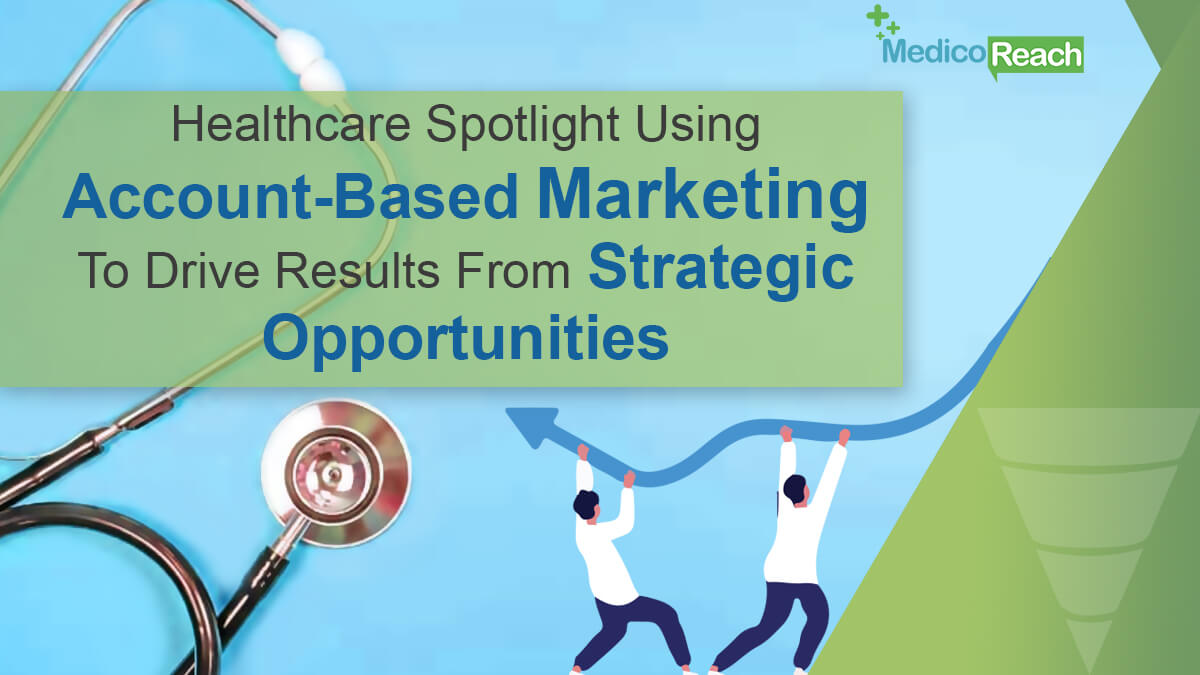
- Date: May 24, 2021
- Category:
In our current digital age, physicians have to be more accessible, however, due to several reasons, targeting them has become a lot more difficult. This particular situation makes the B2B life sciences and healthcare marketing sector very challenging.
But of course, all is not lost because this has paved the way for new opportunities along with innovative solutions such as account-based marketing.
Since HLS organizations strongly target Hospitals, ABM has become quite the emerging force in reaching out to those hard-target audiences.
So what exactly is account-based marketing?
In simple terms, account-based marketing or ABM means an intended approach for marketing to certain key accounts. It’s basically a way of marketing to decision-makers — either at once or strategically to build & nurture the right customer relationships.
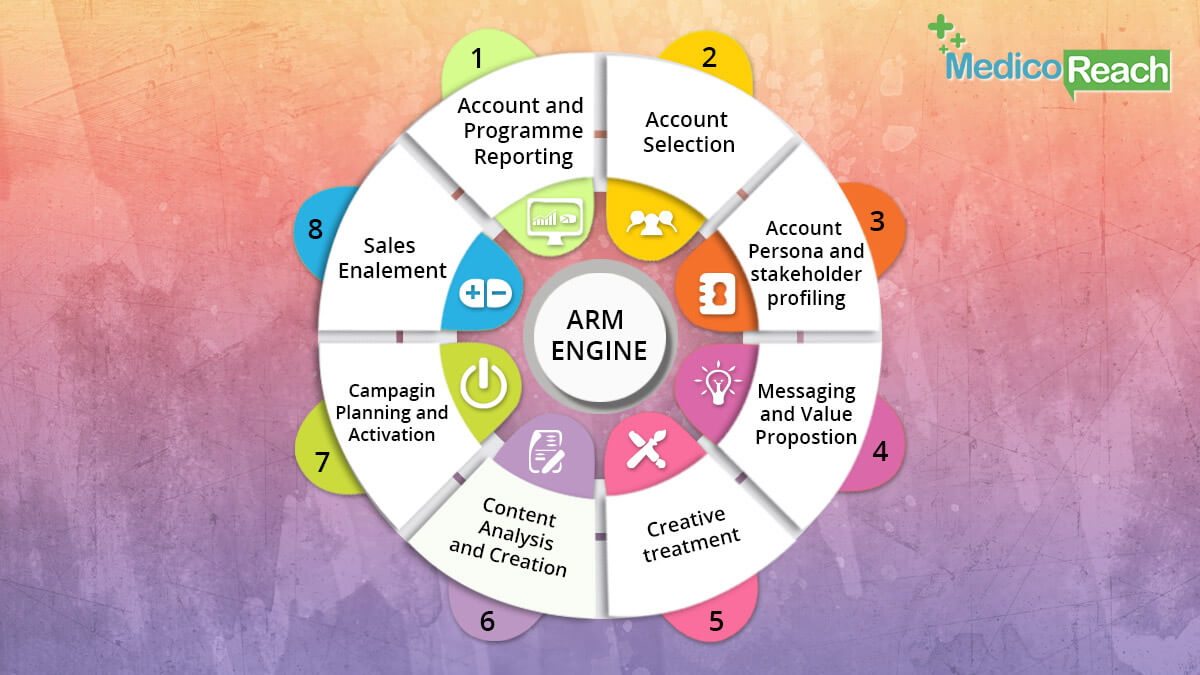
Source: NeworldStamp
With ABM, you’re engaging and influencing key accounts along with their associated personas via customized and multi-channeled programs designed to drive enhanced results and specific outcomes.
Now before we dive further into ABM, here’s a sneak at just how significant ABM is in marketing:
- According to SiriusDecisions, over 90% of B2B marketers see account-based marketing as extremely vital in their marketing efforts as a whole while about 84% of marketers claim ABM offers compelling benefits to keep and expand existing client relationships.
- From 2017 State of account-based marketing study findings, around one-third of marketers report over 100% enhanced engagement with its C-suite targets when engaged from an account-based aspect.
- Marketostates ABM reduces about half a percent of sales time wasted on unproductive leads.
- According to FlipMyFunnel, businesses/companies that utilize ABM garners 200% more revenue in their marketing efforts when compared to ones that don’t.
Does ABM Actually Drive Desirable Results?
As healthcare-based B2B organizations target complex providers, the focus on account-based marketing models continues to increase.
ABM is known to cultivate improved alignment between sales & marketing, thus greatly improving marketing contributions to retain business and growth goals. As such, 89% of marketers reportedly claim higher ROI from ABM compared to traditional marketing, after two years.
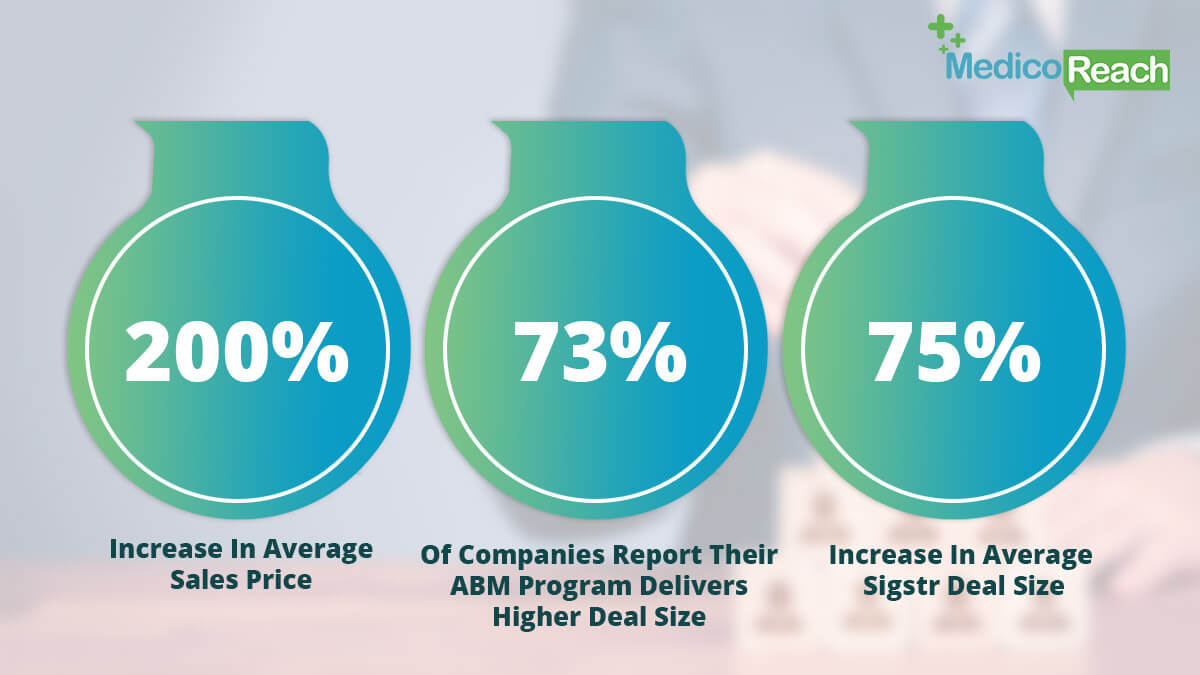
Source: B2C
Additionally, in their marketing efforts, companies that practice ABM are known to generate 208% more revenue while over 90% of ABM marketers observe the greater average deal size, with increases of over half a percent.
But that’s not all!
A survey from individual stakeholders reveals how 40% of them were more willing to purchase from suppliers that tailored content according to their specific needs as compared to suppliers that didn’t.
Perhaps, one of the top compelling account-based marketing examples is Medidata, a tech company that develops & markets software services concerning clinical trials. What they did was take guidance from SiriusDecisions and enforced the ABM Framework.
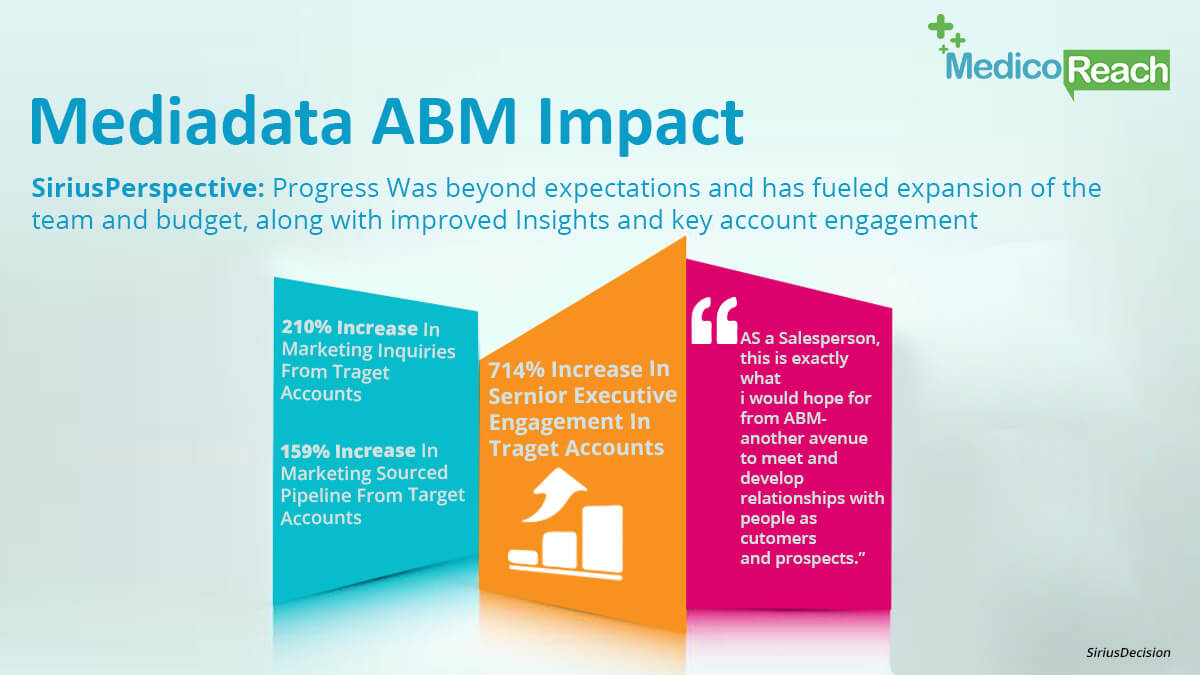 The group developed their target list by singling out over a thousand individuals present across 100 of their target companies that controlled over $9 billion in potential business.
The group developed their target list by singling out over a thousand individuals present across 100 of their target companies that controlled over $9 billion in potential business.
And the result? Medidata’s ABM program observed engagement levels that had a seven-fold increase plus tripled revenue via the target accounts. They also generated increased qualified leads and purchase velocity right from the initial contract to its signed revenue.
3 Tips on Establishing a Killer ABM Strategy
Now that you’re able to grasp the benefits of account-based marketing, let’s factor in on some of the elements involved in establishing a killer ABM strategy.
1. Identify Your Targets
When you’re setting up effective ABM strategies, the most fundamental thing to do is identifying your targets because let’s admit it, shooting without aiming first has never been successful unless you’re counting in Hollywood blockbusters.
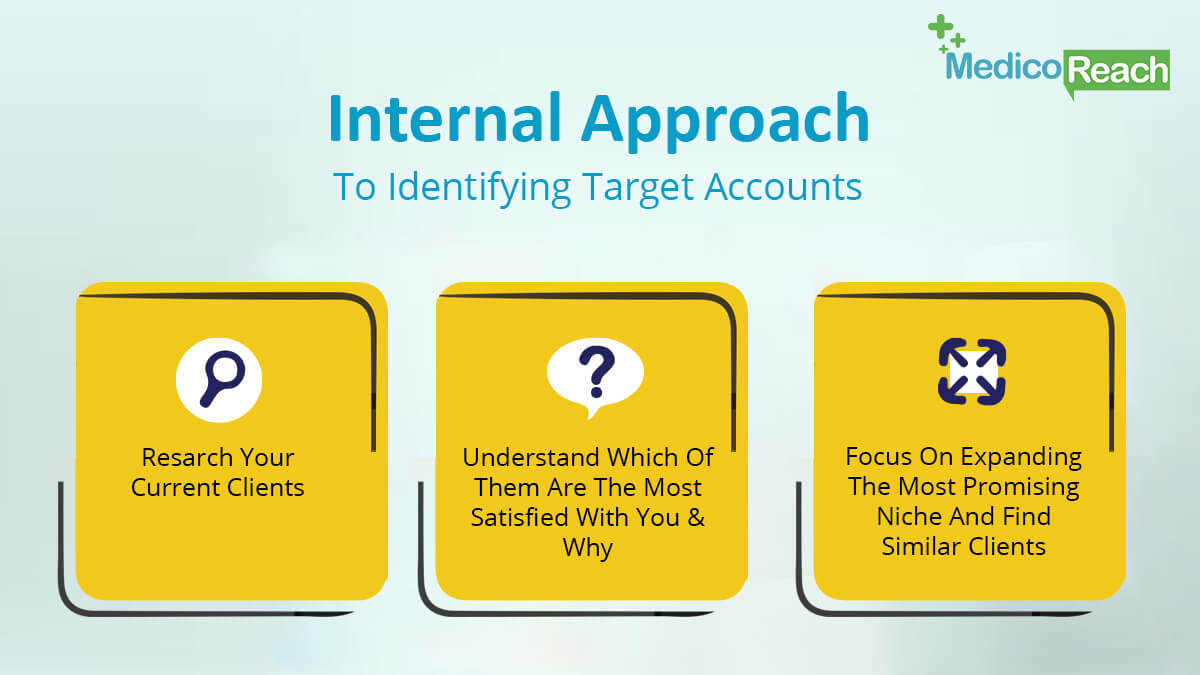
Source: man.digital
By utilizing the technology that’s at your disposal, you can entirely prioritize any high-value account by basing it on revenue potential along with other key factors like market influence and/or purchase potential.
From its simplest perspective, this observation begins by creating a targeted account list. Over time, firmographics and behaviors similar to accounts can produce new identical accounts, additional separate divisions of those existing accounts, and more.
2. Dig Deeper and Map Out Your Strategy
Once you’re able to acquire your targeted list of companies, your team has all the information required in paving a common ground with the people you’re actually trying to attract.
By employing tools like LinkedIn, you can manually research those behind each of your targeted companies. This will aid in finding key players & decision-makers placed within each of the target companies.
Once you’ve completely factored in on that, start prepping a content strategy addressing each of your targets. However, it shouldn’t only be executed through a persona level only. Instead, you’ll want to develop something that centralizes on single deals you’re interested in making with the organization as well.
3. Execute and Analyze the Results
As your content strategy begins to unfold, it’s time for the perfect execution or in other words, set the plan in motion. However, maintaining a consistent message is incredibly vital during this stage to keep the target company from receiving mixed messages.
So, to keep this execution successful, you’ll have to hatch a plan that measures and evolves with time. The metrics utilized should highlight the number of people that are engaging with your brand from within each of the target companies.
Plus how these touch points are influencing each of their behaviors & actions, along with the amount of revenue being influenced for the target companies.
In the end, it’s important to remember how ABM at its core operates similar to a scientific experiment: hypotheses>trials>data collection & analysis>new hypotheses again and the entire rinse & repeat cycle. It’s a process that will enable your marketing to have continuous improvement, growth, and change.
Final Thoughts
Seeing how ABM is currently one of the driving forces behind B2B healthcare marketing, it’s not as difficult to understand how the opportunities provided by ABM are much wider and qualified as compared to traditional marketing.
While no marketing journey is straightforward, with three years into it, this particular program serves as a vital component regarding digital communication strategies and supports large deals that may otherwise take years for implementation in its absence.
Long story short, if you’re looking to improve the alignment of your healthcare organization across marketing & sales along with the ability to attain key accounts then it’s time to highly consider Account-Based Advertising



